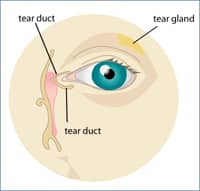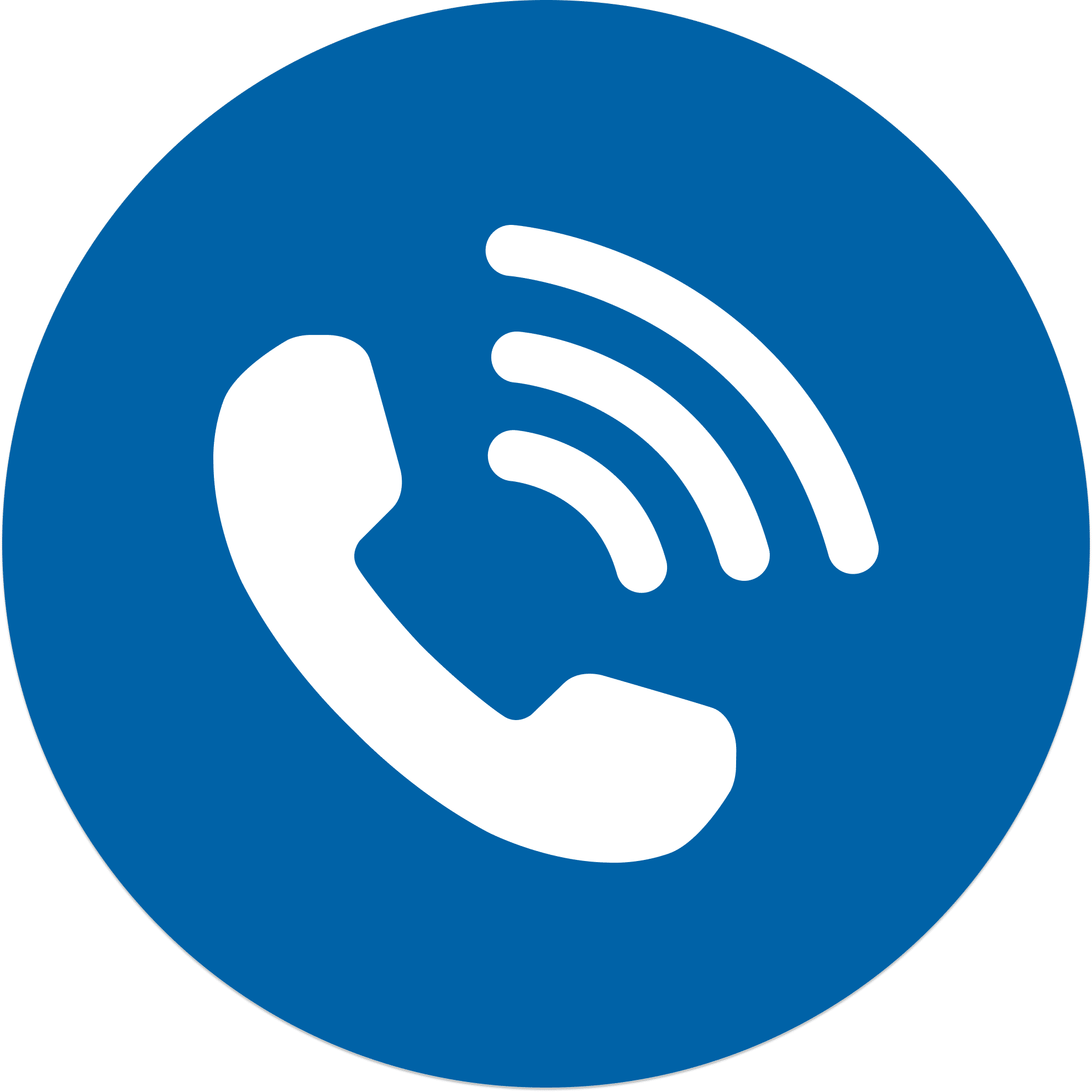Take Our Dry Eye Self-Test!
Explanation of Dry Eye Symptoms, Causes, and Treatment
What is Dry Eye?

Dry eye-related discomfort is one of the most common complaints heard by eye doctors. The symptoms of dry eye syndrome vary depending on the individual case, however, patients that suffer from dry eye usually experience a number of the following symptoms:
- Redness
- Dryness
- Scratchiness
- Blurred Vision
- Foreign body sensation
- Burning sensation
- Sandy/gritty sensation
Dry eye syndrome, often referred to as keratitis sicca or keratoconjunctivitis sicca, is caused by insufficient and/or poor-quality tears. There are three main components of human tears. The lacrimal gland produces most human tears. The oily component of tears is produced by the meibomian glands and the third component, the goblet cells, keeps all of the components mixed up. When one of the parts of this mixture becomes unbalanced, dry eye syndrome can occur. There are numerous reasons as to why these glands may not be doing their part.
Insufficient tear production and/or poor tear quality are among the most common causes of dry eye syndrome. Inflammation of the lacrimal gland is the most common cause of insufficient tear volume. Meibomian gland dysfunction, inflammation of the glands at the eyelid margin, contributes to poor tear quality. Medications can also cause ocular dryness. Hormonal changes may contribute to insufficient and/or poor-quality tears.
TearCare® for Dry Eye Treatment
If you’re looking for an advanced dry eye treatment option, explore the TearCare procedure. TearCare works by wearing adjustable technology that sends thermal energy to the meibomian glands, clearing up any blockages that result in dry eye discomfort. Learn more about this personalized, open-eye procedure when you contact us to schedule an appointment with our eye doctors.
Treatment Options for Dry Eye Syndrome in Cleveland, Ohio.

Artificial Tears
Artificial tears containing active ingredients such as carboxymethylcellulose, hydroxypropyl methylcellulose, glycerin, castor oil, polyethylene glycol or polyvinyl alcohol are used in mild cases of dry eyes. Not all artificial tear brands work the same or work in all patients. More severe cases require additional treatment.
If you find yourself using your artificial tears three or more times a day you should use a preservative-free tear. Most patients find that artificial tears do help, however, the effect is only temporary, lasting only 10-15 minutes. Most of these patients will experience significant relief with punctal occlusion.
Punctal Occlusion
The puncta is the small opening found on the edge of the upper and lower eyelids next to the nose. Tears drain out of the eye through the puncta into the nose, this is why your nose runs when you cry. If you aren’t producing enough tears then you don’t want the tears that you are producing to be drained away. Punctal occlusion is painless and performed in the office, taking only a couple of minutes.
Are you tired of living with dry eye? Take our Dry Eye Self-Test to get started on your path to dry eye treatment. Following your self-test, request an appointment with the dry eye specialists at the Cleveland Eye Clinic today!
Dry Eye Test for People Who Suffer from Dry Eye
Dry eye is a condition that can lead to severe discomfort, inflammation and blurred vision.
The dry eye test is a self-administered examination that can help identify the severity of dry eye. The test consists of two parts: the Schirmer’s Test and the Ocular Surface Disease Index (OSDI) questionnaire.
A Schirmer’s Test measures how much tears are produced by placing strips of filter paper on the inside corner of your lower eyelid for 5 minutes. A score less than 10 millimeters means you have dry eyes. The OSDI questionnaire evaluates symptoms like itchiness, burning, redness and blurred vision over a period of 4 weeks to determine if you have dry eyes or not.
Our own Dr. Chester speaks about his experience with Dry Eye Syndrome
Intense Pulsed Light (IPL) For Dry Eye Treatment
What is Intense Pulsed Light (IPL)?
IPL (Intense Pulsed Light) is a medical treatment that uses light energy to treat various skin conditions. It works by delivering pulses of optimal light wavelengths to the skin, which target specific areas to reduce redness and stimulate the production of collagen. Collagen is a protein that helps keep our skin firm and elastic. IPL can be used to improve the appearance of skin problems such as rosacea. IPL can also be beneficial in relieving inflammation that contributes to dry eyes, especially when it is related to ocular rosacea.
How does IPL work for Dry Eye?
When it comes to dry eyes, IPL can also be beneficial in relieving inflammation that is associated with ocular rosacea. Ocular rosacea is a condition that affects the eyes, causing redness, dryness, and irritation. IPL treatment for ocular rosacea involves using the light energy to target the blood vessels that are causing the inflammation. The light energy heats up the blood vessels, causing them to shrink and reduce the inflammation. By reducing the inflammation, IPL can help alleviate the symptoms of ocular rosacea and improve the overall comfort of the eyes.
It’s important to note that IPL treatment for ocular rosacea should always be performed by a trained professional. They will assess your condition and determine the appropriate settings for the IPL device to ensure safe and effective treatment. Additionally, multiple sessions may be required to achieve the desired results, as each person’s response to IPL may vary. It is always best to consult with a medical professional to determine if IPL treatment is suitable for your specific condition and needs.
Preparation for IPL
Prior to your IPL procedure, you should avoid too much sun exposure, UV light exposure, and any type of artificial tanning. Avoid ibuprofen and aspirin. Inform your doctor if you are on any medications prior to treatment.
The IPL Treatment
The IPL procedure may be used in conjunction with other dry eye therapies. A comprehensive dry eye evaluation performed by Dr Chester and his team is the first step of the process. The evaluation will determine what part of the ocular surface isn’t working properly and he will recommend a custom treatment plan based on the results of the exam.
If Dr. Chester recommends the IPL procedure, there will be a minimum of treatment sessions that are spread across three months.
On procedure day…
- Make sure you aren’t wearing any makeup on your face
- Protective goggles will be placed over your eyes
- A conductive gel will be applied below your eyelid area
- Dr. Chester will apply the pulsed light across your eyelids in a series of pulses.
- The conductive gel will be removed
Possible Side Effects of IPL
- Tingling of the face
- Discomfort
- Slight mucus discharge
- Redness on treated area
- Skin lighting where treatment was applied
The side effects are rare, mild, and typically don’t persist.
Ready to treat dry eye? Get started by scheduling an appointment today.
LipiFlow Treatment
LipiFlow is an office procedure designed to remove blockages in meibomian glands. This blockage results in rapid evaporation of your tears and can lead to irritation, discomfort, and if not treated, gland dropout. The LipiFlow treatment combines a gentle eyelid massage with heat to stimulate oils and reduce the symptoms of Dry Eye.












